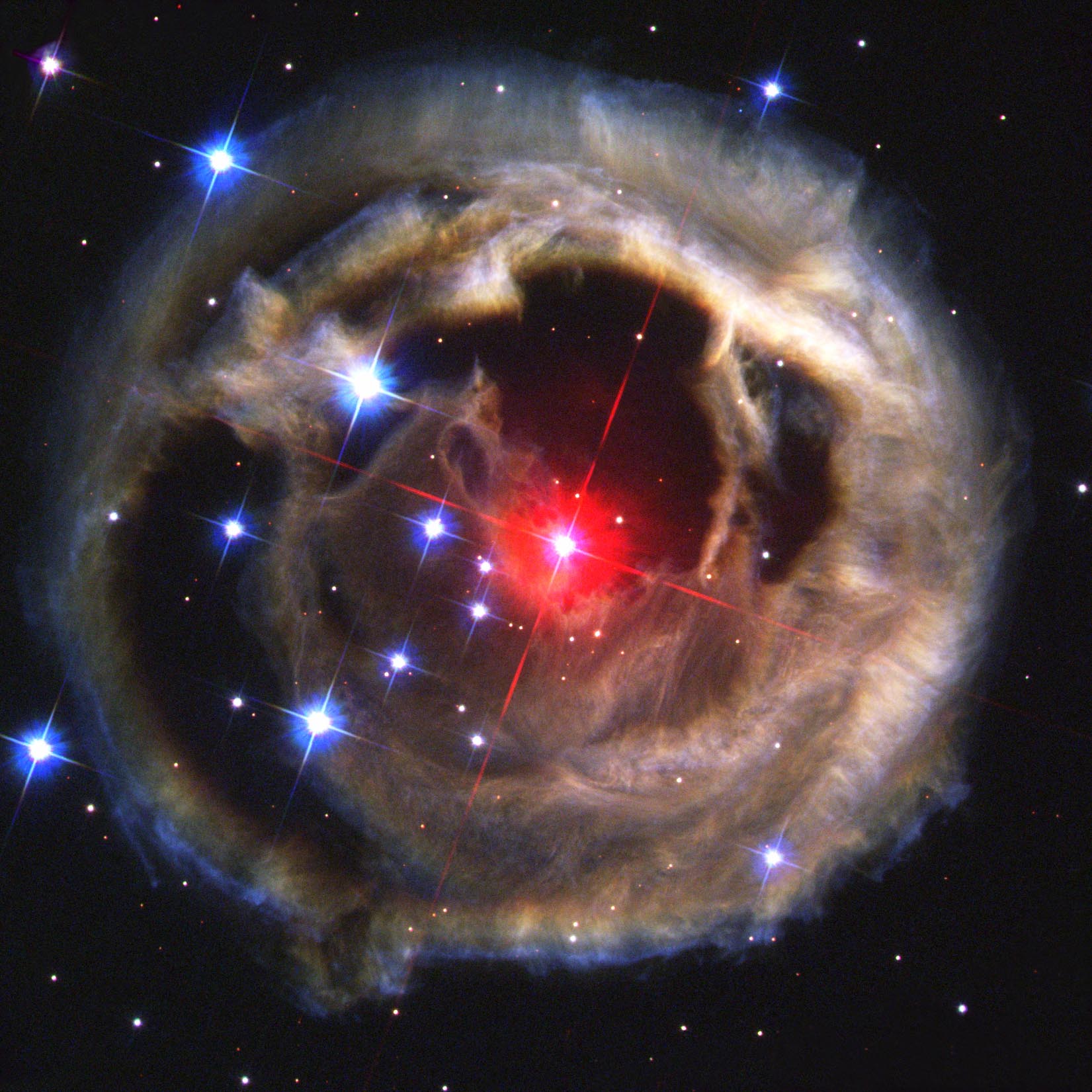#l-type_supergiant

L-type supergiant
Type of cool star
L-type supergiants are an extremely rare type of supergiant star that have spectral types of "L" due to their low temperatures. Such stars should be very unstable due to the extremely low density and temperature but can exist for short periods of time. A star that may eventually become an L-type supergiant starts as a B- or late O-type main sequence star and evolves off the main sequence, up and to the right on the H-R diagram. It may expand by up to a factor of 300 and cool dramatically in the process due to the laws of thermodynamics, reaching spectral type M10 at ~2,400 K and cooling into the L-type range. An L-type supergiant can also form when a pair of hotter, sometimes main-sequence stars undergoes a luminous red nova explosion preceding or during the transition from B-type main sequence star to B or A-type giant to orange or red supergiant, such as in the case of V838 Monocerotis. Some sources also claim that V838 Monocerotis was an extremely unusual main-sequence star, with a temperature of 7300 K and a luminosity less than twice the Sun's, corresponding to an F-type or G0 star. Examples are VX Sagittarii and V838 Monocerotis at their coolest. These stars have huge extended atmospheres that can reach past the orbit of Jupiter.
Sat 13th
Provided by Wikipedia
This keyword could refer to multiple things. Here are some suggestions: